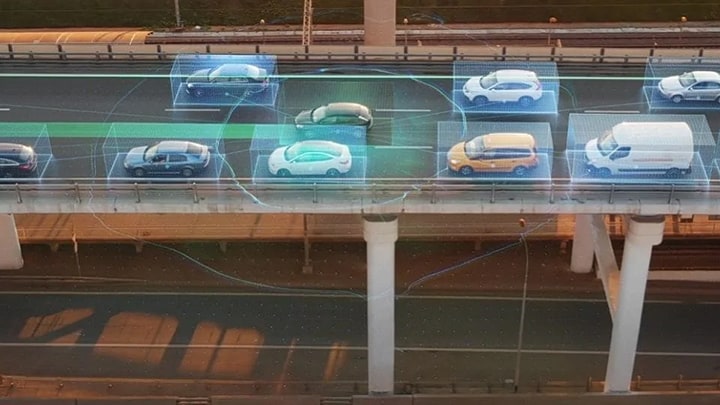At NXP, we see automotive Ethernet in the distributed vehicle network as the best solution for automotive data
management. It enables broad connectivity and provides the required low latency and quality of service needed for
advanced control functions and full-motion video. It also reduces weight, saves power, increases efficiency, enables
upgrades and makes autonomous driving more affordable.
Ethernet provides high bandwidth for higher levels of data processing
With an automotive Ethernet network, multiple vehicle systems simultaneously have access to high bandwidth over a
single Unshielded Twisted Pair (UTP) cable. Ethernet then becomes the backbone of the vehicle, able to support
higher levels of data processing and different communication types. Using traffic engineering features like Time
Aware Shapers, each port receives a dedicated bandwidth and the entire backbone is capable of IP connectivity.
Collaboration across the industry through the OPEN Alliance SiG is pushing further innovation in automotive
Ethernet. The alliance looks to drive non-proprietary industry standards to enable the migration from multiple
closed applications to an open, scalable Ethernet based network.
NXP supports 100BASE-T1, the latest spec for automotive Ethernet
The latest specification for automotive Ethernet is the 100BASE-T1 – this is the first automotive baseband
medium for 100 Mbps Ethernet over single UTP cables. It follows the IEEE 802.3bw standard with PHY layer specs for
point-to-point full duplex on 100 Mbps operations.
NXP actively supported the development of this standard. The expansion of our automotive Ethernet portfolio is
testament to our commitment to improving the network capabilities for car makers. The new TJA1102 Ethernet PHY
provides innovative sleep and wake-up-forwarding functionality, so that the same Ethernet channel provides data
transmission and wake-up of the ECU, saving the additional wire that otherwise would be required. This dual
port PHY is the first in the industry designed to 100BASE-T1, and meeting the OPEN SiG Standard for Sleep and
Wake-Up, also known as OPEN TC10. It includes two transceivers in a small 8 mm x 8 mm package that results in more
than 30% area saving compared to two single port PHY devices.
The TJA1102 dual port PHY is combined with the latest SJA1105x Ethernet
switch to form a highly optimized Ethernet subsystem. The SJA1105x is a five port Gigabit switch that
streamlines the design of safety-related ECUs such as ADAS and gateways. It is the industry’s first ASIL-A
compliant Ethernet Switch, certified by NXP’s own SafeAssure functional
safety program. It is equipped with extensive TSN capabilities for time-aware shaping technology that is
prepared to manage the data flow of increasingly complex future vehicle networks. This is particularly
important if you consider how networks are developing. With the move towards the Ethernet backbone where there might
be a central compute node with a zonal distribution of gateways with switches. This means that the network
architecture will be optimized for reduced wiring and at the same time provides a standardized, scalable
architecture that increases processing and security capabilities.
Handling increasing data transfer rates
One of the key challenges in making the move towards this will be the ability to cope with further increasing data
transfer rates. Typically, this topology will require an increase from 1 Gbps to 10 Gbps to still enable data
aggregation over the backbone, which puts a considerable strain not only on the networking components, but also on
the software architecture. Today, in the standard Linux® OS environment, there is already 100% load on both the
transceiver and receiver cores. To be able to increase the data transfer rate needed to scale up to 10 Gb, standard
OS APIs are not effective for high packet rates. Instead, data path centric software architectures and
implementations will have to be used to accommodate the hardware acceleration, which is needed for 10 Gb.
Today, Ethernet is still in the early phases of deployment, with a fast maturing ecosystem. Already automakers are
making the move towards these optimized subsystems for their entry level volume produced vehicles, but without
further standardization and industry-wide collaboration there could be a significant challenge to meeting the
requirements for the super-high-performance computing of the autonomous car of tomorrow.




